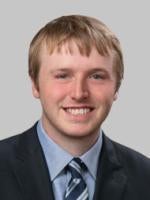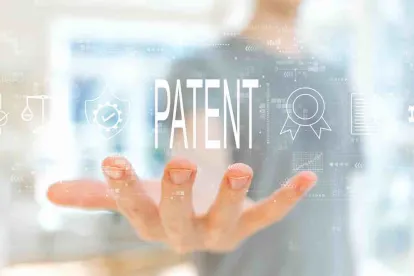Senators Chris Coons and Thom Tillis recently introduced the bipartisan 2023 Patent Eligibility Restoration Act that would make significant changes to U.S. patent eligibility law. The “Findings” section of the Act states that “Efforts by judges of district courts and courts of appeals of the United States to apply the [judicially-created] exceptions [to patent eligibility] … have led to extensive confusion and a lack of consistency.” Thus, a main purpose of the Patent Eligibility Restoration Act, per Senator Coons, is to address uncertainty around what areas of innovation are patent eligible. For example, Senator Coons has identified technologies such as medical diagnostics and artificial intelligence as warranting patent eligibility in the United States, despite current case law limiting the ability to obtain U.S. patents in those areas.
The 2023 Patent Eligibility Restoration Act
The preamble of the Act explains that it would make two fundamental changes to U.S. patent law: (i) erasing the current judicially-created exceptions to patent eligibility and (ii) directing courts to exclusively consider 35 U.S.C. § 101 when making eligibility determinations:
(5) Under this Act, and the amendments made by this act, the state of the law shall be as follows:
(A) All Judicial exceptions to patent eligibility are eliminated
(B) Any invention or discovery that can be claimed as a useful process, machine, manufacture, or composition of matter, or any useful improvement thereof, is eligible for patent protection, except as explicitly provided in section 101 of title 35, United States Code, as amended by this Act, as described in subparagraphs (D) and (E) of this paragraph.
(C) Sections 102, 103, and 112 of title 35, United States Code, will continue to prescribe the requirements for obtaining a patent, but no such requirement will be used in determining patent eligibility
Some commentators have suggested moving this language to the body of § 101 to make it stronger.
Changes to 35 USC § 101
The Act would largely leave in place the current language of § 101, putting it in new § 101(a), with exceptions set forth in new § 101(b):
(a) Whoever invents or discovers any useful process, machine, manufacture, or composition of matter, or any useful improvement thereof, may obtain a patent therefor, subject only to the exclusions in subsection (b) and to the further conditions and requirements of this title.
(b) ELIGIBILITY EXCLUSIONS.—
(1) IN GENERAL.—Subject to paragraph (2), a person may not obtain a patent for any of the following, if claimed as such:
(A) A mathematical formula that is not part of a claimed invention in a category described in subsection (a).
(B)
(i) Subject to clause (ii), a process that is substantially economic, financial, business, social, cultural, or artistic, even though not less than 1 step in the process refers to a machine or manufacture.
(ii) The process described in clause (i) shall not be excluded from eligibility for a patent if the process cannot practically be performed without the use of a machine or manufacture.
(C) A process that—
(i) is a mental process performed solely in the human mind; or
(ii) occurs in nature wholly independent of, and prior to, any human activity.
(D) An unmodified human gene, as that gene exists in the human body.
(E) An unmodified natural material, as that material exists in nature.
(2) CONDITIONS.—For the purposes of sub-paragraphs (D) and (E) of paragraph (1), a human gene or natural material shall not be considered to be unmodified if the gene or material, as applicable, is—
(A) isolated, purified, enriched, or otherwise altered by human activity; or
(B) otherwise employed in a useful invention or discovery.
Note that § 101(b)(1)(B) outlines an exception, but also provides an exception to the exception. In particular, it excludes from eligibility “a process that is substantially economic, financial, business, social, cultural, or artistic,” unless the process “cannot practically be performed without the use of a machine or manufacture.”
Note that § 101(b)(1)(D), as read in light of § 101(b)(2), could essentially turn back the clock to the pre-Myriad days of being able to patent “isolated” genes.
Changes to 35 USC § 100
Perhaps as extra-protection for process claims that have come under heightened patent-eligibility scrutiny by the courts, the Act also would amend the definition of “process” set forth in 35 USC § 100:
(b)The term “process” means process, art or method, and includes a new use, application, or method of manufacture of a known or naturally-occurring process, machine, manufacture, composition of matter, or material.
It also would clarify the meaning of “useful” in new paragraph (k):
(k) The term ‘useful’ means, with respect to an invention or discovery, that the invention or discovery has a specific and practical utility from the perspective of a person of ordinary skill in the art to which the invention or discovery pertains.
Would These Changes Strike The Right Balance?
A press release on Senator Tillis’s website describes the Act as “bipartisan legislation that will restore patent eligibility to important inventions across many fields, while also resolving legitimate concerns over the patenting of mere ideas, the mere discovery of what already exists in nature, and social and cultural content that everyone agrees is beyond the scope of the patent system.” The press release cites Senator Tillis’s concerns that “our current Supreme Court’s patent eligibility jurisprudence is undermining American innovation and allowing foreign adversaries like China to overtake us in key technology innovations.” The press release cites Senator Coons’s hope that the Act will “reform patent eligibility law to bring vital clarity for inventors and innovators and ensure the United States maintains its competitive edge.”
Senator Chris Coons is the Chair, and Senator Thom Tillis is the Ranking Member, of the Senate Judiciary Committee’s Subcommittee on Intellectual Property. The fact that such high-ranking members have cosponsored the Act suggests that it may be taken seriously by other legislators. Organizations and stakeholders who support its changes may want to consider reaching out to their Senators and Congresspersons if they want to see the Act gain traction and become law.





 />i
/>i

